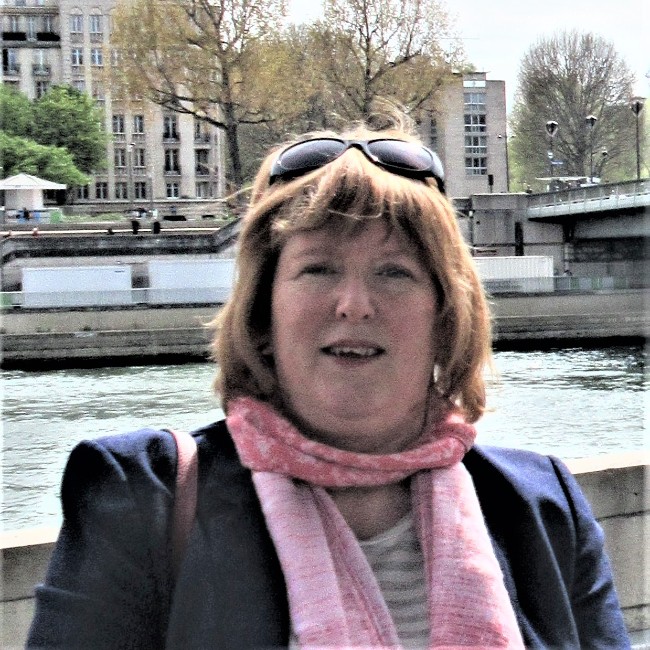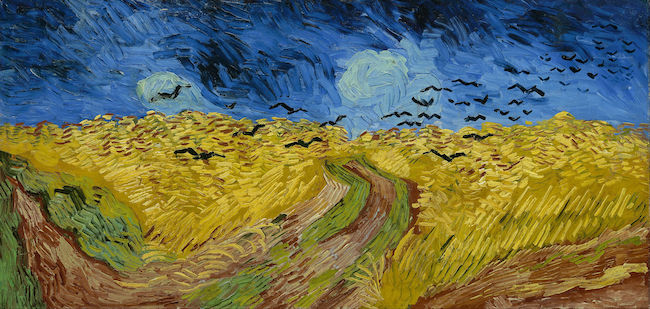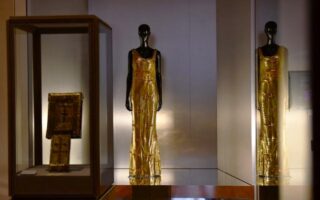Art and Absinthe: A Walk around Auvers-sur-Oise


- SUBSCRIBE
- ALREADY SUBSCRIBED?
BECOME A BONJOUR PARIS MEMBER
Gain full access to our collection of over 5,000 articles and bring the City of Light into your life. Just 60 USD per year.
Find out why you should become a member here.
Sign in
Fill in your credentials below.
Ever since 27th July 27th, 1890 when Vincent Van Gogh shot himself, the village of Auvers-sur-Oise has been inextricably linked with the artist’s death. Situated about 50km north of Paris, in summer it becomes a tourist honeypot for visitors to his last home and for retracing his steps where he created some of his most remarkable paintings.
But Auvers-sur-Oise was well-known to artists long before Van Gogh even arrived in France. Tucked away behind the main street stands a museum and house dedicated to an early practitioner of the “open air” method of painting more famously associated with the Impressionists.

Van Gogh’s last home, the Auberge Ravoux. Photo: Pat Hallam
Charles-François Daubigny was born in 1817 in Paris into a family of talented artists. Money was tight though, and at the age of 15, Charles-François started hand-painting sweet and jewelry boxes to help support his family, before turning to engraving which he continued to practice throughout his life. Just before his 20th birthday he and a friend visited Italy. The Italian countryside was a revelation and on his return to Paris, Charles decided to become a landscape painter, the genre with which he would be associated for the rest of his life.
He married in 1842 and moved to Fontainebleau. It was an ideal location for a landscape painter. Close to the village of Barbizon, the area was well-known for its artists known as the “Barbizon School”. Pioneers of painting en plein air, they carried portable easels and their paints into the forest to paint directly from nature.

Daubigny’s maison atelier in Auvers-sur-Oise. Photo: Pat Hallam
Daubigny thrived and regularly exhibited at the salons. He still lived in Paris but often visited the Val d’Oise, where he had happy memories of convalescing during his childhood. In 1857 he bought a boat, nicknamed Le Botin, and converted it into a mobile studio – what he called a bateau-atelier. Every summer he and his son Karl stayed in Auvers-sur-Oise and sailed the length of the rivers Oise and Seine – right up to Rouen sometimes – painting the Ile de France and Normandy countryside. Then, in 1860, he moved to Auvers full-time and bought a house which became a renowned meeting place for young artists and disciples.
This maison-atelier is now open to the public. It is a modest home, still containing Daubigny’s furniture and featuring the decorative walls and ceilings that Daubigny and his friends painted themselves. The bedroom of his daughter Cécile is particularly charming. Painted wall panels depict fairytale characters such as Red Riding Hood and children’s toys and games, such as badminton rackets. She slept in an alcove worthy of a fairytale princess, with pretty drapes surrounding the bed. Both Karl and Cécile helped their father decorate the room.

Wall panel in Cecile’s bedroom. Photo: Pat Hallam
The largest room is Daubigny’s studio, with a high ceiling and comfortably furnished. Daubigny did not intend to decorate this room but was overridden by his friend Corot, who painted wall frescoes depicting scenes from Italy bringing back memories of Daubigny’s youth. Eventually, Le Botin was replaced by a second boat called Le Bottin. A scale model of this second boat is on display, as is a series of humorous engravings depicting Daubigny’s escapades on the river. He comes across as an affectionate father and a faithful friend.

Daubigny’s studio. Photo: Pat Hallam

Frescoes painted by Corot. Photo: Pat Hallam
Professionally, Daubigny continued to garner respect and accolades and in due course he rose to sit on the Salon committee. From this influential position, he promoted the works of the upstart Impressionists. Although his own painting technique was quite conventional, Daubigny recognized that the new generation of artists like Monet, Renoir and Pissarro were simply taking the outdoors philosophy of the Barbizon School to its logical conclusion and inventing a new language of art along the way. He continued to support them for the rest of his life. When he was forced to move to England during the Franco-Prussian War in 1870, he kept in touch with Monet and Pissarro, also exiled in south London, and promoted their work to the art dealer Paul Durand-Ruel.
A few meters up the road from Daubigny’s house is a small museum dedicated to his work. Here, you can see his technique changing towards the end of his life: his involvement with the Impressionists influenced him to use freer, less precise brush strokes. Also on display is a large collection of his engravings, which, unlike the canvases, are informal, sketch-like and sometimes humorous depictions of people and domestic life.
And even though they never met, Van Gogh was well aware of Daubigny’s reputation. On Daubigny’s death in 1878, Vincent wrote his brother Theo, “My uncle has told me Daubigny has died. That pains me, I admit shamelessly. It must be a good thing to be aware when you are dying that you have done really good things, to know that, thanks to that, you will remain alive in the memory of at least some people, and leave a good example to those who follow.”

Vincent van Gogh, Wheatfield with Crows, July 1890, Auvers-sur-Oise. Van Gogh Museum. Photo Source: Public Domain/Wikipedia
Not far from Daubigny’s house is another interesting museum: the Musée de l’Absinthe. This anis-flavored aperitif is enjoying a revival, but in the 19th century it generated a moral panic among the respectable bourgeoisie, who pronounced it the scourge of the lower classes and representing the moral and physical ruin of French society. The museum charts its history from its very early days when it was promoted as a health drink! The problem with absinthe was that its most active ingredient is wormwood, which contains trace amounts of the chemical compound thujone.

Absinthe was once marketed as good for health. Photo: Pat Hallam
People believed thujone was responsible for turning drinkers into absinthe addicts, rotting the brain and turning them psychotic. In fact, it was probably the addition of toxic copper salts to enhance the green color which caused hallucinations and madness. Over-imbibers were said to be under the influence of la Fée Verte, or the Green Fairy. Writers and artists leaned in to its bohemian image, depicting the physical ravages caused by absinthe addiction, as you can see in Manet’s painting The Absinthe Drinker, or Degas’ Absinthe. Even writers not usually associated with bohemia, such as Lewis Carroll in Britain, enjoyed a tipple.

Wormwood plant. Photo: Pat Hallam
The museum has recreated a corner of a typical estaminet, or neighborhood cafe, and has an impressive display of spoons and fountains. Wormwood is incredibly bitter, so the taste was sweetened by a sugar cube placed on a slotted spoon held over the glass. Water dripping on the spoon dissolved the sugar and diluted the drink at the same time. The absinthe fountain enabled several people to do this at the same time and is a very convivial way to share the drink. Outside the museum a garden cultivates the herbs infused in absinthe. Like most aperitifs, it actually contains a variety of herbs, including tansy, sweet fennel and green anise. The villain of the piece, wormwood or artemisia absinthium, also flourishes in the garden.

Antique absinthe fountain. Photo: Pat Hallam
Absinthe was finally outlawed in France in 1914, eight years after it was banned in Switzerland after a farmer called Lanfray murdered his family, citing the reason as madness caused by drinking absinthe. In fact, he had been drinking all sorts of alcohol all day and was more likely simply dead drunk. But the ban reinforced absinthe’s outlaw image and prohibition in France remained until the 1930s.
Pernod had been the leading producer of absinthe in France and turned its production towards a more anodyne pastis. The founder of Pernod’s leading rival, Paul Ricard, actually started by selling prohibited pastis above the allowed alcohol level “under the counter” in back street bars in his native Marseille. Absinthe was prohibited a second time under the German occupation in World War II, after which pastis became the favored anis-flavored aperitif across France. Only recently has absinthe become a fashionable drink, after EU laws lifted remaining bans in Europe. Modern absinthe is perfectly safe although a bit of an acquired taste.

Absinthe spoons. Photo: Pat Hallam
It is true you can’t really avoid Van Gogh if you go to Auvers-sur-Oise. The Auberge Ravoux, where he lodged for his final two and a half months, is now a pricey restaurant but you can go upstairs to see his bedroom. There is a popular walking trail around the village which matches the actual buildings with his last, fevered paintings. And just outside the village is his grave in the cemetery.
To this day, Van Gogh’s sudden death remains a puzzle. Right to the end, he was writing his brother Theo asking him to send new paints and canvases, which do not sound like the ravings of a depressive. Did he have a sudden psychotic episode while out walking? As suicide attempts go it was a bit clumsy – he shot himself in the body rather than the head – and he survived for a couple of days. Theo rushed up from Paris and arrived just before Vincent passed away. Three months later, Theo was also dead and the two brothers are buried side by side. The fact that Vincent Van Gogh’s work now sells at astronomical prices is largely due to the efforts of Theo’s widow – but that is another story.
Auvers-sur-Oise can be reached on RER Line H (operated by SNCF) from Gare du Nord. It is just inside Zone 5 so a Navigo pass will take you there at no extra cost.

The graves of Vincent and Theo van Gogh. Photo: Pat Hallam
Lead photo credit : The church Notre-Dame-de-l'Assomption in Auvers-sur-Oise. Photo: P.poschadel / Wikimedia commons
More in Absinthe, Art, Auvers-sur-Oise, Vincent van Gogh






REPLY